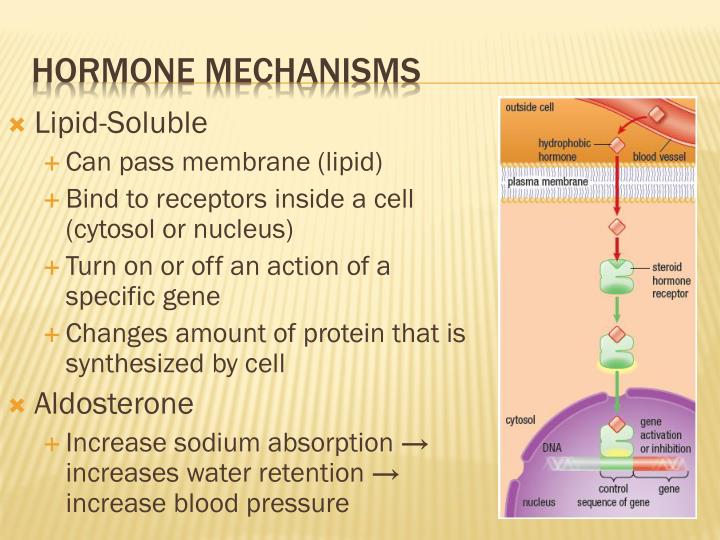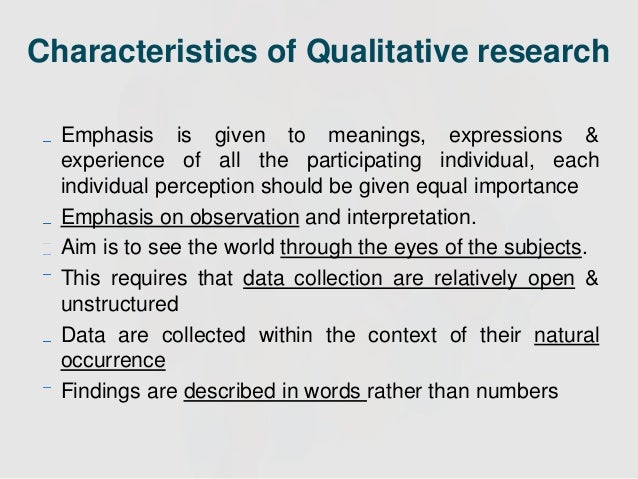Digestion absorption and metabolism
Digestion Absorption And Metabolism. Carbohydrates comprise approximately 40 to 45% of the caloric intake in the average western diet. Saliva contains the enzyme, salivary amylase. Here, the absorption of nutrients follows the. The end products are derived from protein and mainly carbohydrate fermentation.
 Digestion and Absorption of Lipids Human Nutrition From pressbooks.bccampus.ca
Digestion and Absorption of Lipids Human Nutrition From pressbooks.bccampus.ca
Fructose and galactose are converted to glucose in the liver. What is digestion process whereby the body breaks down food into absorbable nutrients. Once protein is digested, the body can utilize its nutrients to build and repair many of the. Digestion, absorption, and transport ofthe major dietary carbohydrates. Digestion is one of the four processes responsible for obtaining nutrients by higher animals. Describe the processes of digestion, absorption, and metabolism.
The digestion of proteins takes place in the stomach with the help of protease and pepsin enzymes, which breaks down the proteins into amino acids.
They are digested and absorbed in the stomach and intestine. The other three are the ingestion, absorption of nutrients, and the elimination of waste. Get rid of the waste, which is anything your body can’t use. The major carbohydrates consumed are starches, sucrose, maltose and lactose. The passage of digested nutrients into smaller size from the lower digestive tract through. Fsn 210 final exam part 1 97 terms.

Describe the processes of digestion, absorption, and metabolism. Chewing of food, movements of the stomach and intestine facilitate the. The digestion of proteins takes place in the stomach with the help of protease and pepsin enzymes, which breaks down the proteins into amino acids. The major carbohydrates consumed are starches, sucrose, maltose and lactose. Nanoencapsulation delivery systems have been used to enhance the absorption and bioefficacy of phytochemicals.
 Source: researchgate.net
Source: researchgate.net
With modified physical and chemical properties, nanoencapsulated phytochemicals differ from their free forms in digestion, absorption, and metabolism. The intestinal tract is the predominant region for the digestion and absorption of carbohydrates and plays principal roles in glucose transport and. During digestion and absorption, protein passes through many organs. Break down the food into tiny pieces. Digestion, absorption and metabolism presented by janice hermann, phd, rd/ld oces adult and older adult nutrition specialist.
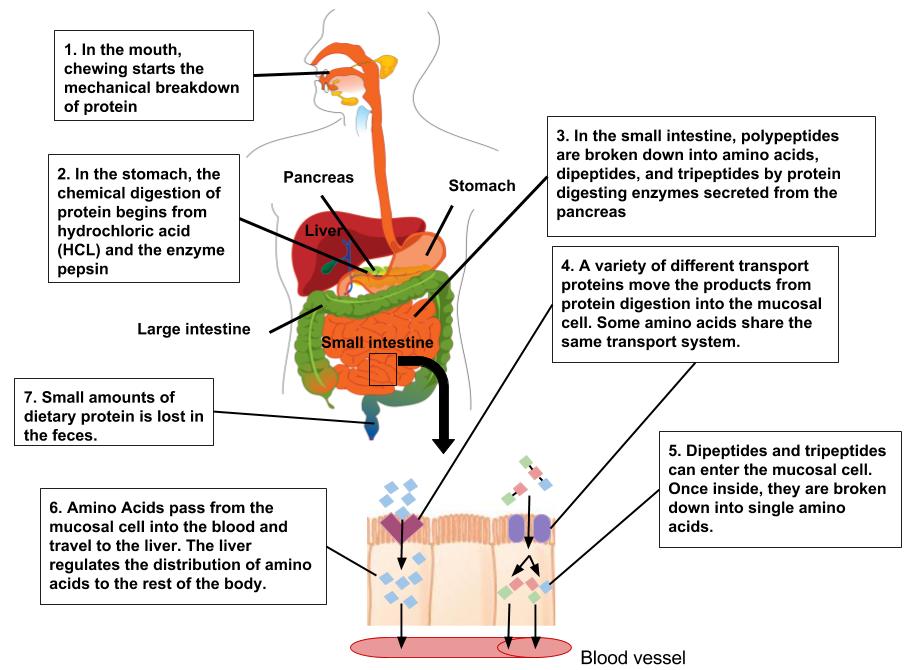 Source: pressbooks.bccampus.ca
Source: pressbooks.bccampus.ca
Here, the absorption of nutrients follows the. Once absorbed carbohydrates pass through the liver, glucose is the main form of carbohydrate circulating in the bloodstream. The passage of digested nutrients into smaller size from the lower digestive tract through. The intestinal tract is the predominant region for the digestion and absorption of carbohydrates and plays principal roles in glucose transport and. Chemical processes that take place in the cells after the body absorbs nutrients.
 Source: pressbooks.bccampus.ca
Source: pressbooks.bccampus.ca
The major constituents of the food are carbohydrates, proteins and lipids. Saliva contains the enzyme, salivary amylase. All of this gives the small intestine a huge surface area for absorption.) figure 4.13. Digestive tract is a long tube surrounded by muscles. The two major pancreatic enzymes that.
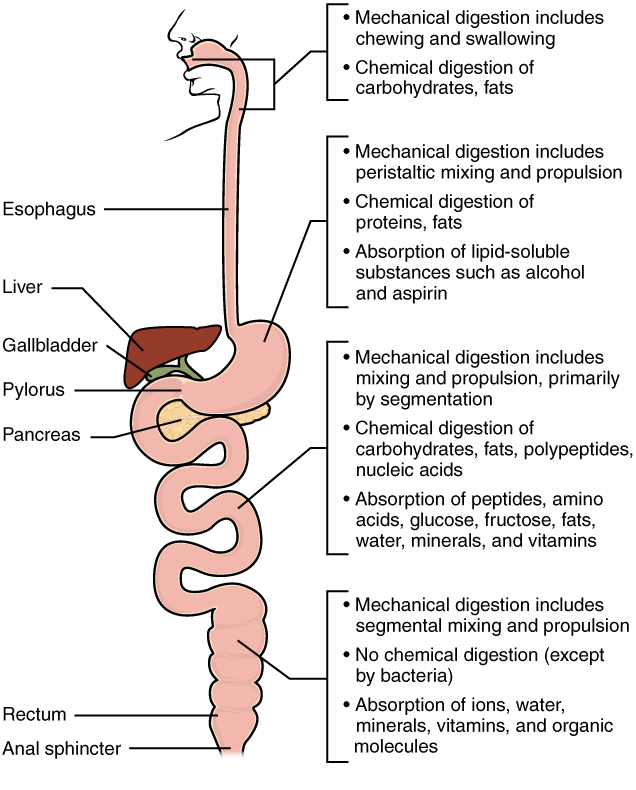 Source: pressbooks.bccampus.ca
Source: pressbooks.bccampus.ca
The two major pancreatic enzymes that. Digestion, absorption and metabolism presented by janice hermann, phd, rd/ld oces adult and older adult nutrition specialist. Proteolytic enzymes (proteases) degrade dietary proteins into their constituent amino acids in the stomach and intestine. Plant starches, polysaccharides containing tens of thousands to a million glucosyl. Break down the food into tiny pieces.
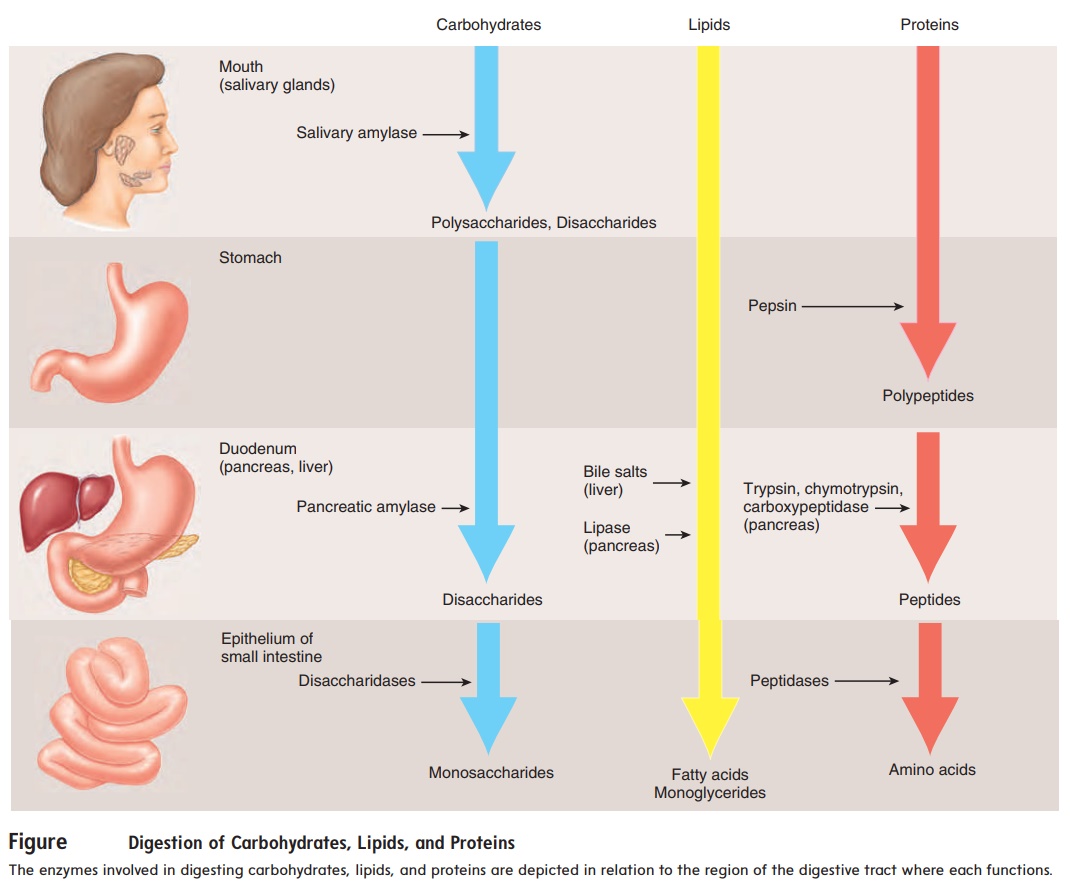 Source: brainkart.com
Source: brainkart.com
Plant starches, polysaccharides containing tens of thousands to a million glucosyl. Other sets by this creator. Digestive tract is a long tube surrounded by muscles. Move the small particles out of the digestive system and the rest of the body. The processes such as mechanical, chemical and microbial are essential for digestion into simpler form.
 Source: bio.libretexts.org
Source: bio.libretexts.org
The other three are the ingestion, absorption of nutrients, and the elimination of waste. Digestion, absorption and metabolism presented by janice hermann, phd, rd/ld oces adult and older adult nutrition specialist. Chemical processes that take place in the cells after the body absorbs nutrients. Move the small particles out of the digestive system and the rest of the body. The chyme leaves the stomach and enters the small intestine, where the majority of protein digestion occurs.
 Source: openoregon.pressbooks.pub
Source: openoregon.pressbooks.pub
The processes such as mechanical, chemical and microbial are essential for digestion into simpler form. There are 4 steps to digestion: Absorb nutrition into the body: Each nutrient follows a metabolic path. Digestive tract is a long tube surrounded by muscles.
 Source: courses.lumenlearning.com
Source: courses.lumenlearning.com
The pancreas secretes digestive juices into the small intestine, and these contain more enzymes to further break down polypeptides. What is digestion process whereby the body breaks down food into absorbable nutrients. The chyme leaves the stomach and enters the small intestine, where the majority of protein digestion occurs. Once absorbed carbohydrates pass through the liver, glucose is the main form of carbohydrate circulating in the bloodstream. Digestion and absorption of carbohydrates in the small intestine.
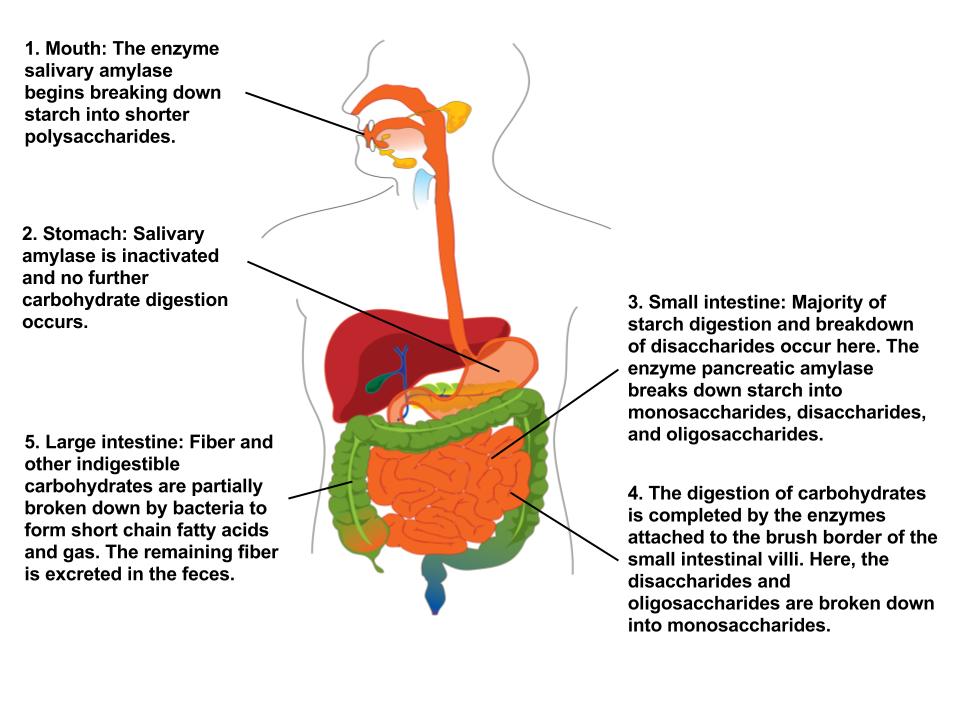 Source: pressbooks.bccampus.ca
Source: pressbooks.bccampus.ca
Proteolytic enzymes (proteases) degrade dietary proteins into their constituent amino acids in the stomach and intestine. The muscles alternate contracting and relaxing pushing food along. Digestion is one of the four processes responsible for obtaining nutrients by higher animals. Absorb nutrition into the body: Fsn 210 final exam part 1 97 terms.
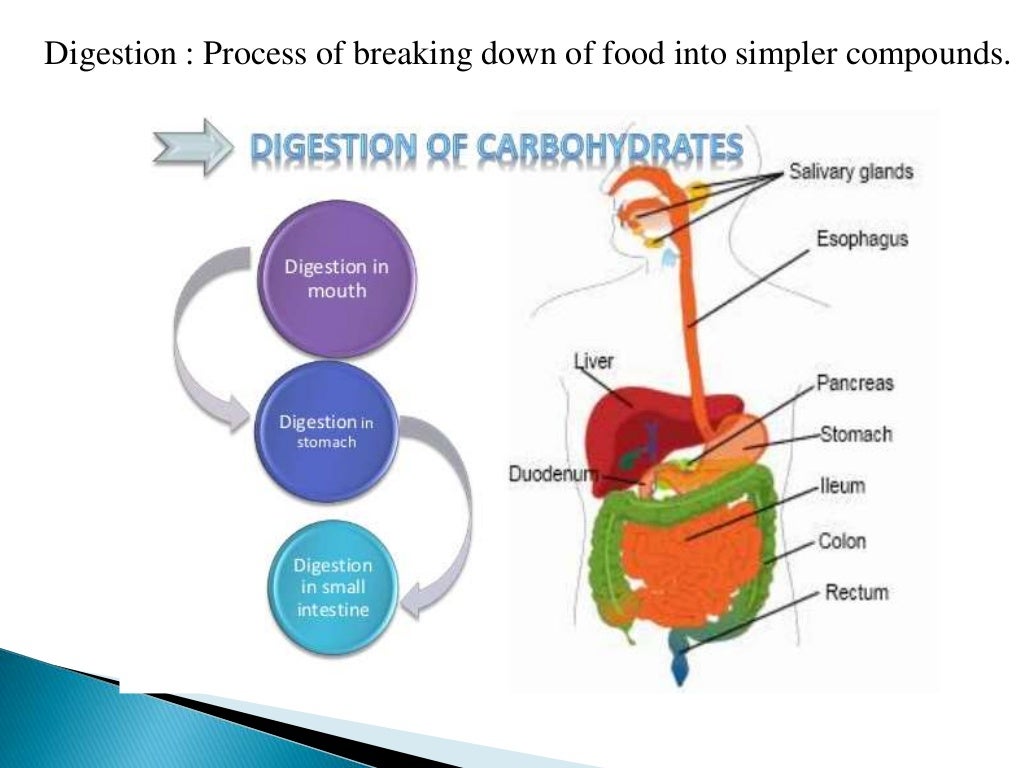 Source: fr.slideshare.net
Source: fr.slideshare.net
Describe the digestion, absorption and metabolism of protein. Saliva contains the enzyme, salivary amylase. With modified physical and chemical properties, nanoencapsulated phytochemicals differ from their free forms in digestion, absorption, and metabolism. Some of the digested/degraded components of the food stuffs may either be reutilized or may be excreted out. The end products are derived from protein and mainly carbohydrate fermentation.
 Source: openoregon.pressbooks.pub
Source: openoregon.pressbooks.pub
With modified physical and chemical properties, nanoencapsulated phytochemicals differ from their free forms in digestion, absorption, and metabolism. The muscles alternate contracting and relaxing pushing food along. Once protein is digested, the body can utilize its nutrients to build and repair many of the. Carbohydrates comprise approximately 40 to 45% of the caloric intake in the average western diet. The process is facilitated by the hydrochloric acid present in the stomach.
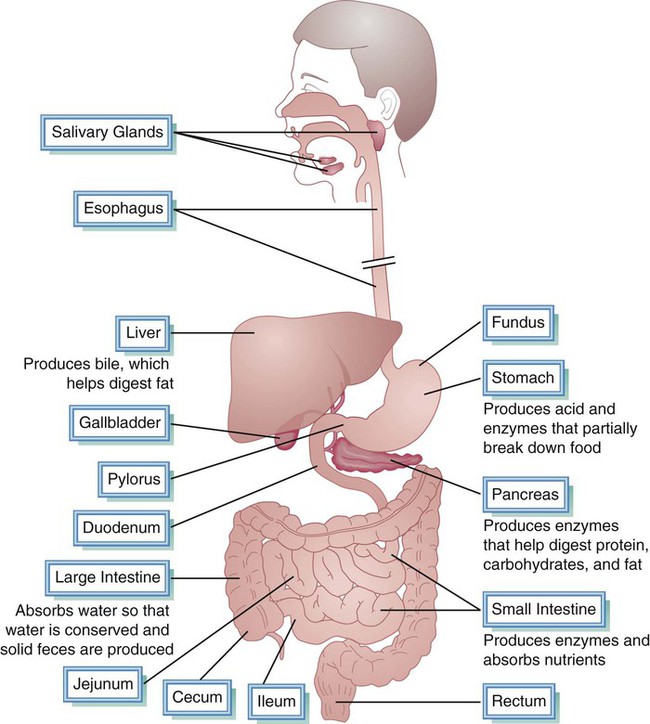 Source: pocketdentistry.com
Source: pocketdentistry.com
Other organs that lie outside th Chewing, also known as mastication, crumbles the carbohydrate foods into smaller and smaller pieces. Describe the digestion, absorption and metabolism of protein. Protein digestion & amino acid absorption. The salivary glands in the oral cavity secrete saliva that coats the food particles.
 Source: introtonutrition.blogspot.com
Source: introtonutrition.blogspot.com
Once protein is digested, the body can utilize its nutrients to build and repair many of the cells in the body. Here, the absorption of nutrients follows the. All of this gives the small intestine a huge surface area for absorption.) figure 4.13. Other organs that lie outside th Get rid of the waste, which is anything your body can’t use.
 Source: byjus.com
Source: byjus.com
Protein is a large, complex molecule that must undergo a series of processes during digestion. Digestion and absorption of proteins. The digestion of proteins takes place in the stomach with the help of protease and pepsin enzymes, which breaks down the proteins into amino acids. The other three are the ingestion, absorption of nutrients, and the elimination of waste. Proteins play a vital role in the growth and replenishment of body cells and tissues.
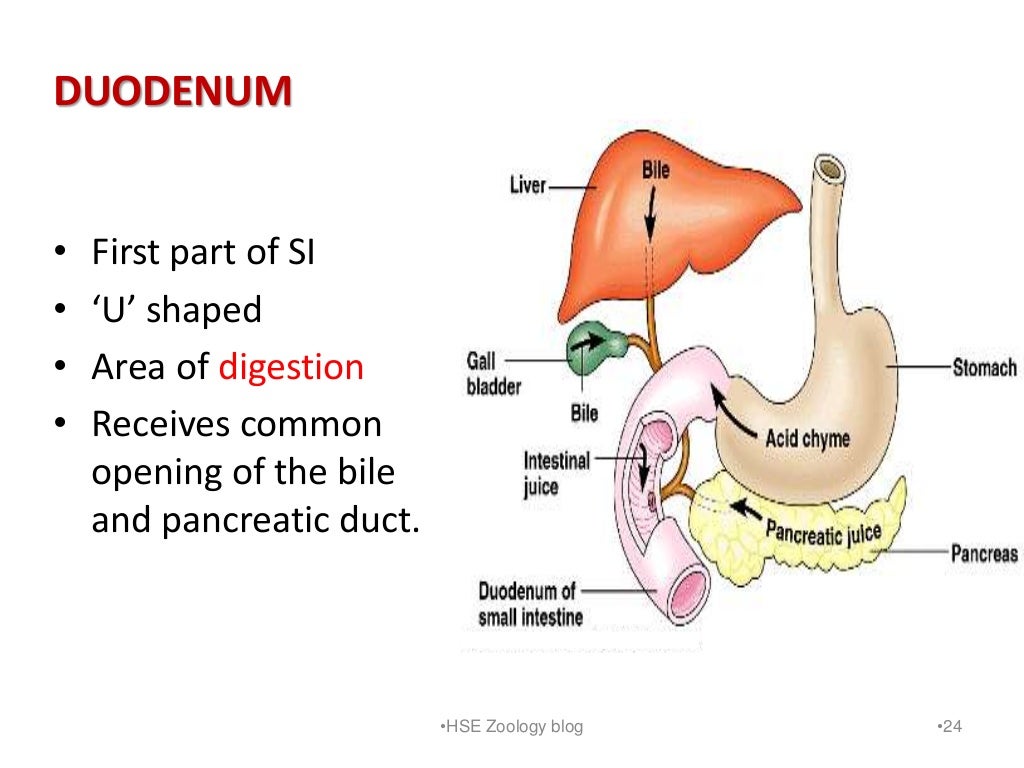 Source: slideshare.net
Source: slideshare.net
Other organs that lie outside th Describe the processes of digestion, absorption, and metabolism. The major constituents of the food are carbohydrates, proteins and lipids. Once protein is digested, the body can utilize its nutrients to build and repair many of the cells in the body. Saliva contains the enzyme, salivary amylase.
 Source: ppt-online.org
Source: ppt-online.org
Protein digestion & amino acid absorption. Community health i (final) 93 terms. Digestion, absorption and metabolism presented by janice hermann, phd, rd/ld oces adult and older adult nutrition specialist. Digestion and absorption of proteins. The pancreas secretes digestive juices into the small intestine, and these contain more enzymes to further break down polypeptides.
 Source: youtube.com
Source: youtube.com
Protein is a large, complex molecule that must undergo a series of processes during digestion. The mechanical and chemical digestion of carbohydrates begins in the mouth. Other sets by this creator. The process is facilitated by the hydrochloric acid present in the stomach. Nutrients that bypass host digestion and metabolism traverse the gut and are metabolized by bacteria.
If you find this site value, please support us by sharing this posts to your preference social media accounts like Facebook, Instagram and so on or you can also save this blog page with the title digestion absorption and metabolism by using Ctrl + D for devices a laptop with a Windows operating system or Command + D for laptops with an Apple operating system. If you use a smartphone, you can also use the drawer menu of the browser you are using. Whether it’s a Windows, Mac, iOS or Android operating system, you will still be able to bookmark this website.



